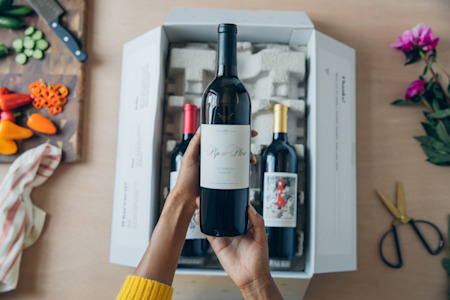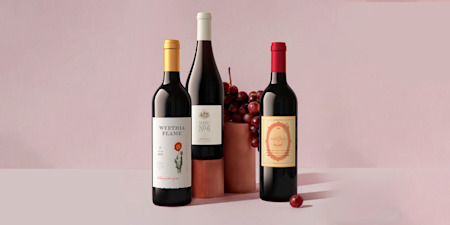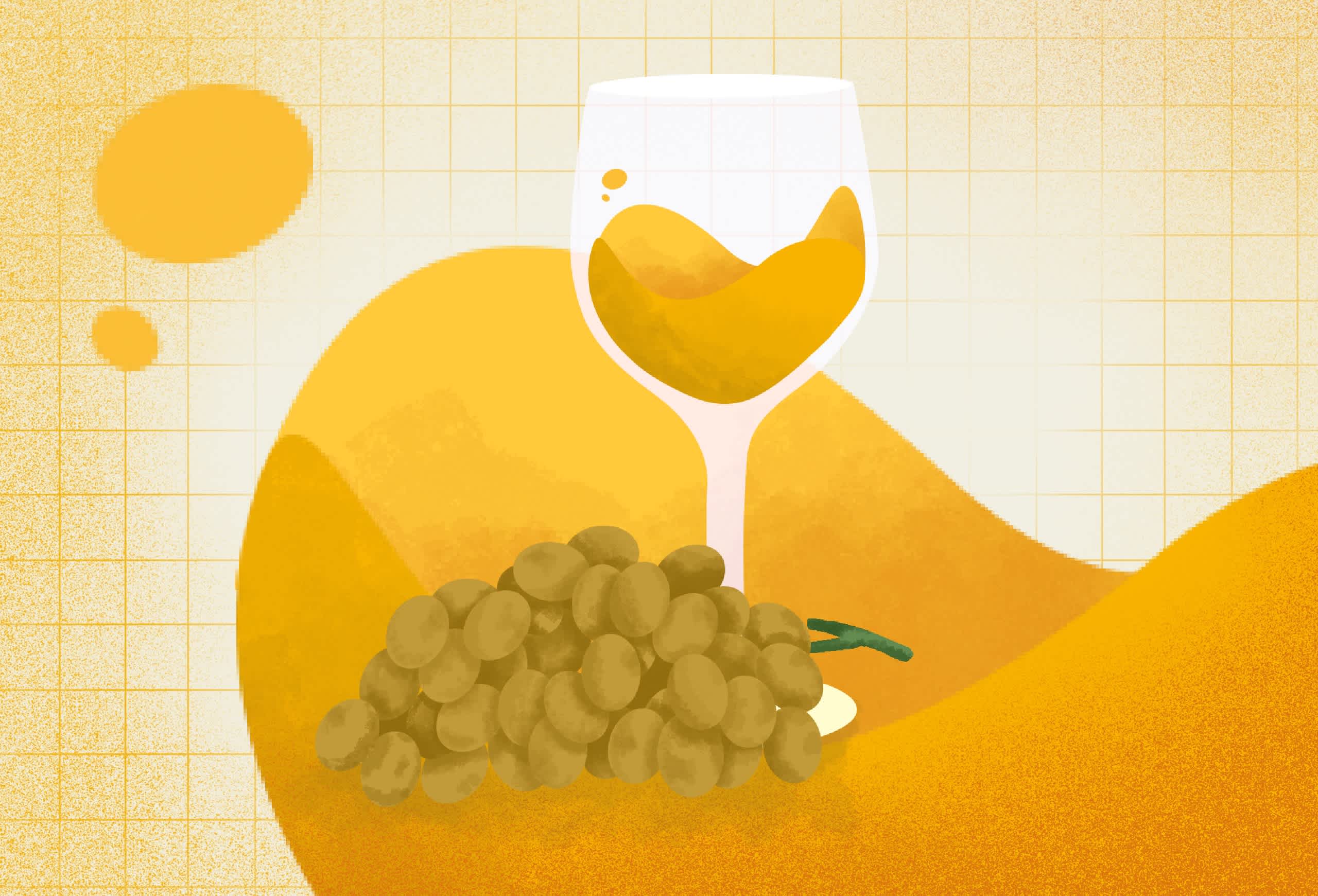How and Why We Swirl Wine
Learn about the effects of swirling wine and how it can make your next glass of wine even better
Some of the best things about wine are intangible. You remember the setting of a great meal where you first tasted a transcendent Pinot Noir. Maybe you remember sharing a bottle of white wine under the Eiffel tower with someone special, lazily swirling the wine in your glass and quietly contemplating life and love.
Wine swirling is a habit that many of us pick up that is also quite practical. But here's a reason you see so many sommeliers swirling their wine glasses at wine tastings.
Why do you swirl wine?
Swirling a wine glass causes rapid aeration which releases more of a wine's aroma.
The wine tasting experience is dominated by our ability to assess a wine for different flavors and textures. By swirling wine we can closely assess the color of the wine, we can see the texture of how it moves in the glass, and we can smell different aromas in a glass of wine that were hidden before. Swirling wine is not just affectation, it's a practical act that wine drinkers can use to enhance every glass of wine they taste.

Sign up for the Club Today
Join Firstleaf to taste delicious wines from all over the world and learn more about these grapes. The club has featured amazing examples, take the quiz to get the pairings for your individual palate.
Take Our QuizIN THIS ARTICLE:
Want personalized wines?
Get your first box of wines for $44.95 + free shipping.

The Scientific Effects of Swirling Wine
The science behind swirling wine is pretty simple. As wine moves up the sides of the wine glass it is agitated along the edges and is infused with more oxygen. This allows the wine to "open up" or breathe releasing various volatile aroma compounds (good flavors) or bad flavors that need time to dissipate after the wine is opened. Our sense of taste is largely precipitated on our olfactory senses (sense of smell).
So no matter what type of wine you are drinking—red wine, white wine, rosé wine—swirling your wine glass will help you access more aroma compounds. Even some styles of sparkling wine can do with aerating, as the process blows off some of the reductive notes.
As wine is exposed to more and more oxygen over time the aromas begin to fade. Oxygen is a double-edged sword in the wine world. It's necessary for flavor development and parts of fermentation, but if you have too much it can oxidize and turn your wine to vinegar. That's why winemakers are incredibly careful to control the amounts of oxygen that reach their wines during the winemaking process.
Why Does Swirling Wine Make Wine Taste Better?
Most of the enjoyment you’ll get from wine is from wine’s aromas. Which means wine is truly tasted with the nose. That’s why you swirl your wine. Swirling wine releases more of these aroma compounds found in wine. For example, when you first pour a nice glass of Cabernet Sauvignon from Napa Valley, your nose will savor delicious aromas of black fruit such as blackcurrant, blueberry, plum. But after swirling your glass a bit, you may also discover secondary aromas of vanilla, clove, coffee or tobacco. Contrastingly, swirling a white wine glass of Sauvignon Blanc may reveal citrus aromas and green notes like grass and asparagus. Those secondary aromas (also known as tertiary aromas or a wine’s bouquet) are usually derived from the winemaking process or aging.
How to Swirl Wine
Swirling a glass of wine confidently will eventually be second nature, but if you need to know how to swirl a wine today all it takes is a little practice.
First find a flat surface and a stemmed wine glass. Set the foot of the wine glass down on the surface and fill the glass 1/4th full, maybe even less. The reason to keep your wine glass so lightly filled is that it makes it easier to swirl and aerate. Less wine in the glass means that more is coming into contact with oxygen when you swirl it. If you fill the wine glass too full you will not only spill, but you won't be able to effectively aerate which will dull the bouquet.
Once you have wine in your glass swirl it in little circles keeping the foot of the glass on the flat surface. Control the motion without your wine coming all the way up the sides of the wine glass. The bigger the bowl of the glass the easier it will be to swirl. Practice this controlled circular motion until you get the feeling for it.
Then you can lift your wine glass off the table and try it in the air. Pretty soon you'll be swirling wine with the best of them and see that your wine tastes that much better!
How Much Should You Swirl Wine
There is an etiquette with swirling your wine, at wine tastings or even at dinner with friends. You don’t need to swirl your wine constantly or the entire time you’re drinking that delicious Pinot Noir or Sauvignon Blanc. Swirling wine for a second or third time won’t improve the taste or aromas of the wine noticeably. In fact, if you were to swirl your wine for hours, you may oxidize it and ruin your wine.
What to Look for After You Swirl Wine
Although we said the key to wine tasting is your nose, your eyes come into play as well. After you swirl wine, you may see wine legs appear due the wine’s viscosity. A wine full of tannins or sugar will tend to spin more slowly around the glass, sticking to the sides. Wine legs are a complex set of interactions between alcohol, water, air, surface tension, and the insides of a wine glass. The liquids separate on a microscopic level inside due to different surface tension levels for each component. This separation creates an effect that looks like wine tears are streaking the inside of your glass of wine. You can read our article about what wine legs can (and can't) tell you about a glass of wine.
You Know How to Swirl Wine. Now What?
Grab your wine glasses! Now that you’re ready to swirl, it’s time to stock up on wine. At Firstleaf, we map our vast portfolio of award-winning wine to your unique taste profile, so that every wine you receive is highly personalized. You won’t be able to find higher quality wine at our price point, and we stand behind that with our satisfaction guarantee. And each of your orders will come with wine cards that include detailed tasting notes and wine pairings. That’s what makes us America’s best and most personalized wine club.

Take Our Wine Quiz
Take our short wine quiz and discover award-winning wines that you'll love.
Get StartedIN THIS ARTICLE
Want personalized wines?
Get your first box of wines for $44.95 + free shipping.


WinePrint™ by Firstleaf
Are you looking to learn more about your wine preferences? Check out our Wine Print for an in-depth look at your personal tasting profile. Discover your favorite wines, varietals, regions, and tasting notes and get personalized recommendations wherever you are.
Learn More